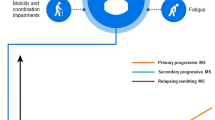Abstract
Objective: At the time of marketing, experience of long-term use of prescription medicines in general clinical practice is limited. Postmarketing surveillance is particularly important at this time when medicines may be prescribed to large numbers of patients of all ages, for long-term use. Following marketing of formoterol (Foradil®) in the UK in 1996 we undertook a postmarketing surveillance study of formoterol use in general practice.
Design: A non-interventional observational cohort study was conducted using the technique of prescription-event monitoring. Exposure data were obtained from prescription details; outcome data from questionnaires sent to general practitioners approximately 12 months after the first prescription was dispensed for individual patients. Incidence rates were calculated for reported events, reasons for stopping treatment and outcomes of pregnancy were determined.
Results: Data were collected for 5777 patients aged 3 to 96 years, 65% of whom continued treatment for >12 months. Formoterol was prescribed ‘off label’, to 258 children, (4.5%) of the cohort. The most commonly reported events excluding those related to respiratory disease, were headache, tremor, palpitation, cramp and nausea/vomiting. These events were also among the more common reasons for stopping treatment and reported as suspected adverse drug reactions. 33 patients took formoterol during pregnancy. The cause of death was established for 186 of the 190 deaths (3% of cohort).
Conclusions: Formoterol appears to have been well tolerated by the majority of patients in this study. The most frequently reported adverse events were those known to be associated with β2-agonists, although the frequency of nausea/vomiting was greater than given in Summary of Product Characteristics.






Similar content being viewed by others
References
Foradil Summary of Product Characteristics. Novartis August 1995, revised Jul 1996, and Dec 1997
Rudolf M. Eformoterol (Foradil): new long acting beta-agonist. Prescriber 1996; 14: 107–14
Palmqvist M, Ibsen T, Mellen A, et al. Comparison of the relative efficacy of formoterol and salmeterol (Serevent) in asthmatic patients. Am J Respir Crit Care Med 1999; 160(1): 244–9
Bartow RA, Brogden RN. Formoterol: an update of its pharmacological properties and therapeutic efficacy in the management of asthma. Drugs 1998; 55(2): 303–22
Mann RD. Prescription-event monitoring - recent progress and future horizons. Br J Clin Pharmacol 1998; 46: 195–201
International ethical guidelines for biomedical research involving human subjects. Council for International Organizations of Medical Sciences/World Health Organization. Geneva: 1993
Guidelines on the practice of ethical committees in medical research involving human subjects [appendix B]. Royal College of Physicians of London; London Aug 1996
Freemantle SN, Pearce GL, Wilton LV, et al. The incidence of the most commonly reported events with 40 newly marketed drugs - study by prescription-event monitoring. Pharmacoepidemiol Drug Saf 1997; 6Suppl. 1: 1–8
dos Santos Silva I. Cancer epidemiology: principles and methods. Lyon, France: International Agency for Research on Cancer, 1999: 120–2
Schatz M. Treating asthma during pregnancy. Reactions 1997; 657: 2
Pearce N, Beasley R, Crane J, et al. End of New Zealand asthma mortality epidemic. Lancet 1995; 345: 41–4
Suissa S, Blais L, Ernst P. Patterns of increasing beta-agonist use and the risk of fatal or near fatal asthma. Eur Respir J 1994; 7: 1602–9
Mann RD, Kubota K, Pearce GL, et al. Salmeterol (Serevent): a study by prescription-event monitoring in a UK cohort of 15,407 patients. J Clin Epidemiol 1996; 49: 247–50
Campbell MJ, Cogman GR, Holgate ST, et al. Age specific trends in asthma mortality in England and Wales, 1983-95: results of an observational study. BMJ 1997; 314: 1439–41
Templeton L, Deeham A, Taylor C, et al. Surveying general practitioners: does a low response rate matter? Br J Gen Pract 1997; 47: 91–4
Martin RM, Kapoor KV, Wilton LV, et al. Under-reporting of suspected adverse drug reactions to newly marketed, black triangle drugs in general practice. BMJ 1998; 317: 119–200
McAvoy BR, Kramer EFS. General practice postal surveys: a questionnaire too far? BMJ 1996; 33: 732–3
Nelson HS. Beta-adrenergic therapy. In: Middleton Jr E, Reed CE, Ellis EF, et al., editors. Allergy: principles and practice. 4th ed. Vol. 1. St. Louis: Mosby-Year Book, 1993: 785–807
Cheung D, Timmers MC, Zwinderman AH, et al. Long-term effects of a long-acting beta2-adrenoceptor agonist, salmeterol (Serevent), on airway hyper-responsiveness in patients with mild asthma. N Engl J Med 1992; 327: 1198–203
Vathenen AS, Knox AJ, Higgins BG, et al. Rebound increase in bronchial responsiveness after treatment with inhaled terbutaline. Lancet 1998; 1: 554–8
Acknowledgements
We would like to record our keen appreciation of the co-operation of the general practitioners and numerous other colleagues who have helped in this investigation. In addition we wish to thank Mrs Jacqui Barfoot for the preparation of this report and for co-ordinating the follow-up. We would also like to thank for their important participation: the Prescription Pricing Authority, the Health Authorities of England and the Office for National Statistics.
The Drug Safety Research Unit is a registered medical charity. It receives unconditional donations from a number of pharmaceutical companies. These companies have no say in the conduct of the studies and have no statistical or editorial control over the analysis or reporting of results. The Drug Safety Research Unit has received such funds from the manufacturers of formoterol.
Author information
Authors and Affiliations
Corresponding author
Additional information
The use of tradenames is for product identification purposes only and does not imply endorsement.
Rights and permissions
About this article
Cite this article
Wilton, L.V., Shakir, S.A. A Post-Marketing Surveillance Study of Formoterol (Foradil®)1 . Drug-Safety 25, 213–223 (2002). https://doi.org/10.2165/00002018-200225030-00006
Published:
Issue Date:
DOI: https://doi.org/10.2165/00002018-200225030-00006




